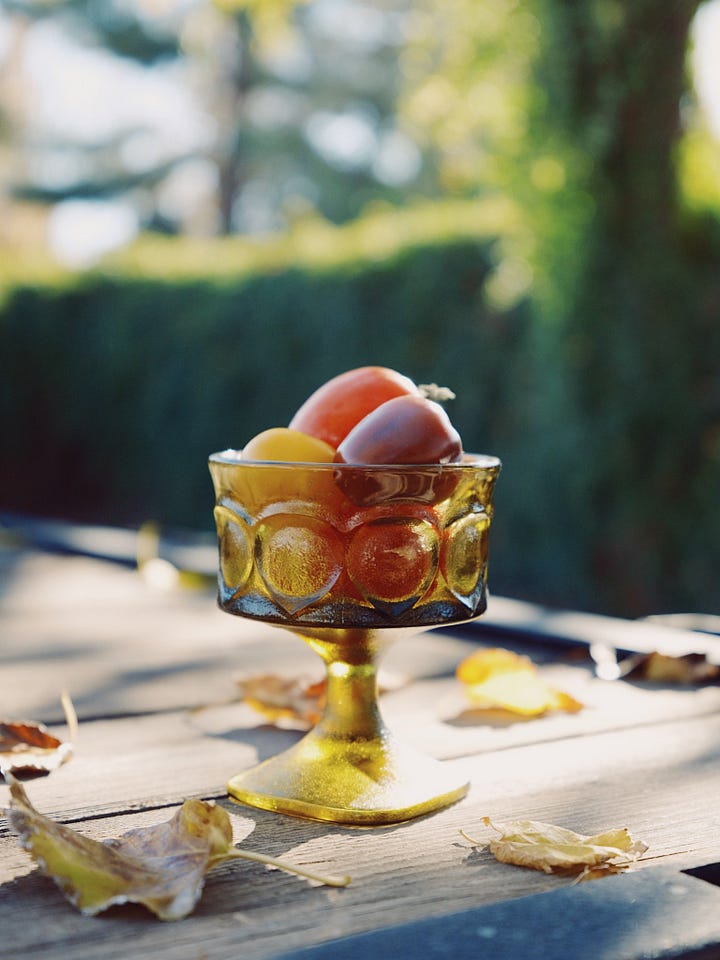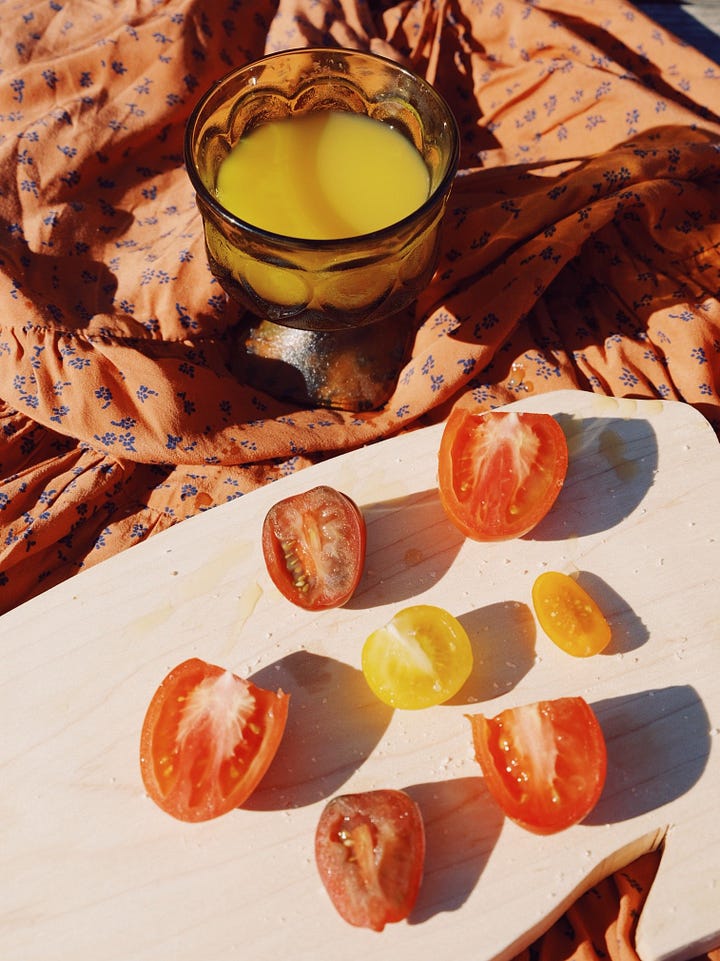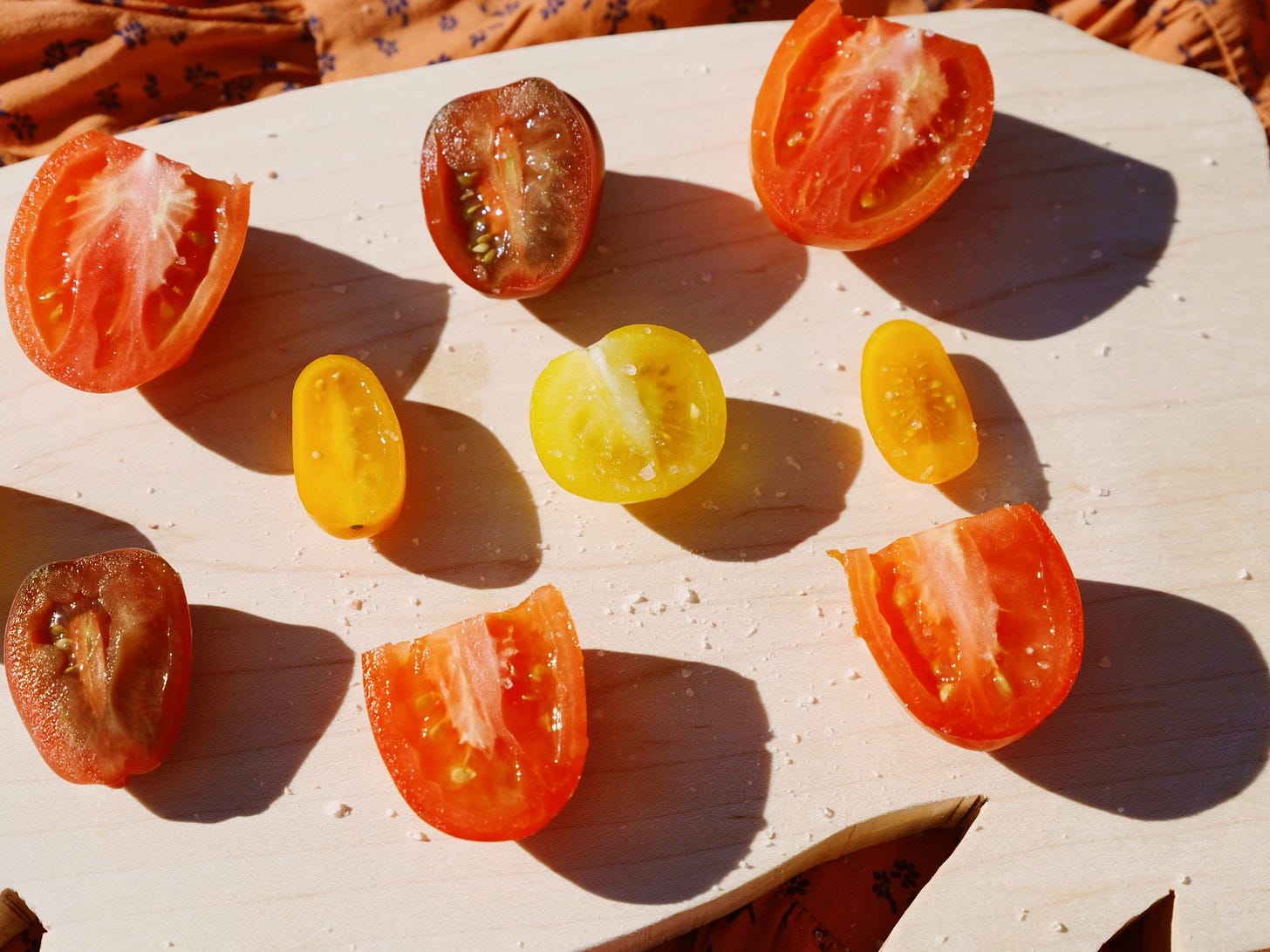

My Love Letter to that Magic Red
Tomatoes are perhaps the most versatile fruit there is. Pasta sauces, salads, bruschetta, salsa, or rimmed with Himalayan sea salt for a light snack. Dress her up in locally made olive oil and accompany sliced fresh cucumber and a handful of lemon zest. She sweats with gooey goodness; she's crisp and savory. She's my everlasting pop of color in the garden.
My parents would fly me to Vernal, Utah, for a month's visit with my grandmother when I was growing up. My favorite memories are nestled between her fluffy couch cushions, watching her favorite cowboy show or soap opera. A snack was always present: cinnamon toast, stringed cheese, or my favorite — a whole tomato was eaten like an apple. Of course, I'd want more than one, but she insisted they'd give me canker sores. She was right.
My dad is a peculiar gardener, always going against the grain and insisting Google is never right about growing foods in the hot desert of Arizona. "Authors of those articles are from people who don't live here. It would be best if you took local advice", he'd say. Homegrown tomatoes are the main reason he started a garden in the first place — if you know, you know. They're relatively easy to maintain and the perfect starting plant for southwestern regions.
The pictures above are tomatoes from my father's well-seasoned plant varieties. They're plump, delicious, and have miraculously rooted for over five years. Yes, you read that right. That plant has survived over five winters' worth of frost, tendered with a bountiful love from his rough hands and dirty nails. They grow crisper by the year and are so tasty even my dogs like to take a bite.
During the off-season, she's the only food I'm guaranteed to buy at a grocery store or farmer's market. I prefer the smaller cherry-sized plops of crunch for a more satisfying bite, but I'll take any I can.
She forever taunts me with that fiery, glossy red color — the color of magic.
How To Grow Tomatoes:
Southwest / Zone “9B” Specific
Because of Arizona’s blistering summers, we have a short growing season unless you're like my father and have seasoned plants in rich, mature soil. These suggestions below are for you to start the first dig.
Look for plants with a short (60-90) day-to-maturity. These are often types with small to medium fruit, but Roma does well. Varieties highly recommended for desert climates include Punta Banda, Celebrity, Pearson, and Cherokee Purple. That’s quite the bountiful basket.
An essential requirement for productive growth is plenty of sunshine, much like me, but I digress — plant in a spot with full sun and adequate growing space for proper air circulation. For multiple harvests, plants allow up to 2 feet between each stem for healthy growth. If you plan to keep them around year after year, replace the surrounding soil after the first year's frost to prevent disease build-up.
A rookie mistake is to assume that the bare ground is enough for any outdoor plant's first year of growth. Tomatoes prefer well-drained loam, such as a mix of sand, silt, and clay. Too much water invites disease, so ensure your area can withstand mounting puddles. Make a habit of amending your soil with compost to correct itself.
Suppose you're starting with a seedling, plant deeply. Dig a shallow trench or deep hole (depending on the depth of your planting bed) and plant the transplant so that only the top leaves are above the ground. Many plant varieties come with specific instructions, but deep space for the roots to flourish is always the standard.
Mulch! Mulch is a planter's love language. Never leave your garden bed without mulch, even for windowsill herbs. Use compost, straw, leaves, or pine needles to reduce evaporation and insulate the soil from extreme hot and cold temperatures. Mulching helps control weeds and ultimately becomes fertilizer as it decomposes into the soil around the plant.
Watering earlier in the day prevents excessive evaporation. Never water the leaves, only the soil. Because the plant has been planted deeply, ensure your water reaches the roots to quench its nutrients. A slow flow nourishes proper growth. Water only as needed. Check on them daily by sticking your finger an inch or two deep. If it's humid, wait another day. If it's dry, water again. That simple!
For proper maintenance, feed your plants every 2-3 weeks. Fertilizer is an excellent source of plant food, and doing so will prevent weeds and pests. Organic fertilizers encourage balanced nitrogen, phosphorus, and potassium supply.
Once the fruit bears, support its heavy stems with a metal trellis. Pick them fast – the birds might want a little taste!
If you’re a visual learner, this video is pretty perfect, and her harvest looks very delicious.
Enjoy!






